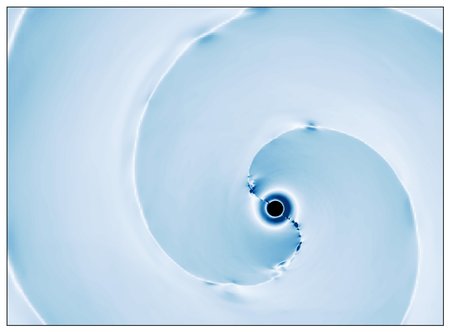In celebration of the 34th anniversary of the launch of NASA’s Hubble Space Telescope, astronomers took a snapshot of the Little Dumbbell Nebula, also known as Messier 76, or M76, located 3,400 light-years away in the northern circumpolar constellation Perseus. The name ‘Little Dumbbell’ comes from its shape that is a two-lobed structure of colorful, mottled, glowing gases resembling a balloon that’s been pinched around a middle waist. Like an inflating balloon, the lobes are expanding into space from a dying star seen as a white dot in the center. Blistering ultraviolet radiation from the super-hot star is causing the gases to glow. The red color is from nitrogen, and blue is from oxygen.
Related posts
-

Astronomers simulate a star’s final moments as it’s swallowed by a black hole: ‘Breaks like an egg’
The universe is full of spectacular and violent events, but few are more dramatic than a... -

Jack Kaye Retires After a Storied Career at NASA
Jack Kaye has decided to retire on April 30, 2025, following 42 years of service to... -

In Memoriam: Dr. Stanley Sander
Explore This Section Earth Earth Observer Editor’s Corner Feature Articles Meeting Summaries News Science in the...